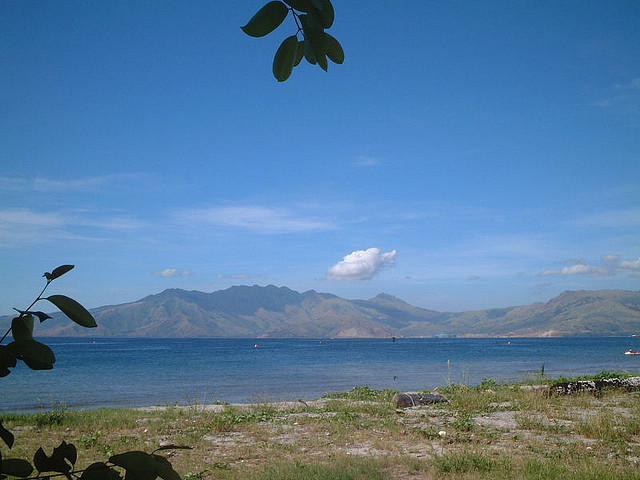Share this page:
Subic Bay is a natural deep-water harbour situated in Zambales Province, Philippines. The main city there is Olongapo City.
For decades and until 1992 an American base was located there. This was the Subic Bay Naval Base. It was home to the huge U.S. Seventh Fleet and its supporting infrastructure. During the period of the American base, the surrounding local communities benefited at least in economic revenue from supplying the base's requirements.

Subic Bay, Zambales province, Philippines
(Photo: Ramon F. Velasquez, 2013.)
However, there was increasing pressure from many Filipinos to close down American bases in their country. On 15 June 1991 the volcano Mt Pinatubo exploded with a massive force and engulfed American bases such Clark Air Base and Subic Bay and caused the destruction of huge numbers of buildings. In September 1991 the Philippine Senate failed to ratify a new treaty allowing American bases in the Philippines. The American military closed their bases and the last sailors and marines left the country on 24 November 1992.
After the departure of the Americans, the area was still frequented by tourists coming for duty-free shopping, scuba diving to the wrecks, and beach resort holidays.
Now the area has been the Subic Bay Freeport Zone (SBFZ). Developers are building golf courses, yacht clubs, casinos and hotels for both wealthy local and foreign visitors.
In 2012, following increased Chinese presence in the South China Sea and faceoffs between China and the Philippines over disputed islands, it was reported that Subic Bay will again host American ships, aircraft and marines on a semi-permanent basis.
History - Spanish and early American eras
In 1542 the Spanish explorer Juan de Salcedo sailed to Zambales and took possession of the area for Spain. While there he came across Subic Bay and reported its existence and its deep and protected anchorages to the Spanish authorities.
At that time Cavite, in the vicinity of Manila, was home to most of the Spanish fleet in the Philippines -- despite that location's unfavorable nature as a naval port (shallow water and lack of shelter from the weather and from attacking forces in time of war).
It was only when the British occupied Manila occupied Manila in 1862 and captured Cavite that the Spanish authorities were forced to look for a better location for their naval base.
A military expedition carried out a survey of Subic Bay in 1868 and recommended that bay as the site for a new naval base. However, the military authorities in Manila feared moving to the provinces (and away from the sophistication of the capital) .
In 1885 work finally began on the construction of the Arsenal de Olongapo.
In 1898 the the Spanish-American War broke out and in 1899 during the Battle of Manila the Americans attacked the Spanish navy yard in Olongapo and it was captured by the Americans in December of that year.
In 1899 during the Philippine-American War the naval yard was occupied by Filipino forces but was soon captured by the Americans.
Share this page:
Author: David Paul Wagner
(David Paul Wagner on Google+)